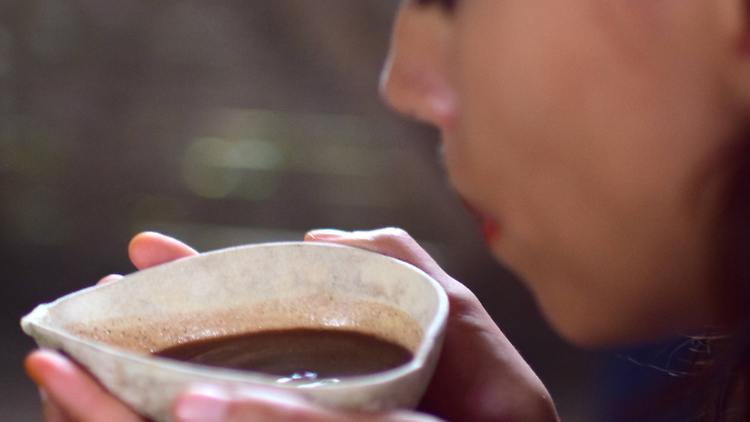
For a few years, the cocoa mixes up the party scene and is celebrated as a legal drug. It combines the chocolate drink rather with a leisurely day on the sofa. How does it fit together?
Cocoa parties conquer the scene. The so-called Lucid parties are celebrated since 2015. Los Angeles, New York and Berlin: Hardly any trendy city has not yet tried the trend. But what is special about these parties? In addition to good music, it is about dancing with other people and having a good time together. Unlike traditional parties, guests consume neither alcohol nor other intoxicants. Instead: high-dose cocoa.
Before the dance floor is stormed, a ceremony takes place. Together they drank the high-dose cocoa. The cocoa ritual usually takes place in a sitting position and in a calm, almost meditative atmosphere. At this time, nothing indicates that here is danced and celebrated extensively. The cocoa is made from freshly ground beans, a few spices and water. Unlike common drinking chocolate creates a bitter, viscous drink.
At the parties, it’s not about ready mixes for chocolate drinks, which can be found in the different variants in the supermarket shelves. The raw, unprocessed bean is responsible for the great euphoria. It is attributed to a drug-like effect.
The new replacement drug?
On the Internet, this untreated cocoa is often touted as a new replacement drug. “The term ‘replacement drug’ is certainly inappropriate,” explains Tomislav Majić, senior physician at the Charité Psychiatric University Hospital. Especially the ceremonial part of the Lucid parties plays, according to the expert, a crucial role. “Most psychoactive substances develop their effects in the context of set and setting.”
Nevertheless, the main active ingredient of the cocoa bean plays a crucial role. The containing theobromine has a stimulating effect. Although it has similarities to caffeine, it has a longer and stronger effect on the heart. “Consumers report a” heart-opening effect, “explains Majić, and cocoa also affects the nervous system.” Although it also acts indirectly in the dopamine system, it does not have any dependency-producing effects. “
For all cocoa enthusiasts, it should be noted: Theobromine in cocoa from a certain dosage has a stimulating effect on humans. The ceremonial process, however, seems to have a decisive influence on the perception and the effect achieved. “Theobromine is probably not more psychoactive than coffee or nicotine,” explains Majić.
Incidentally, the history of the cocoa bean dates back to the time of the Mayas. At that time, the dark bean was used in a stimulating drink. With the Aztecs, it was then considered a luxury for royal houses and nobility.

